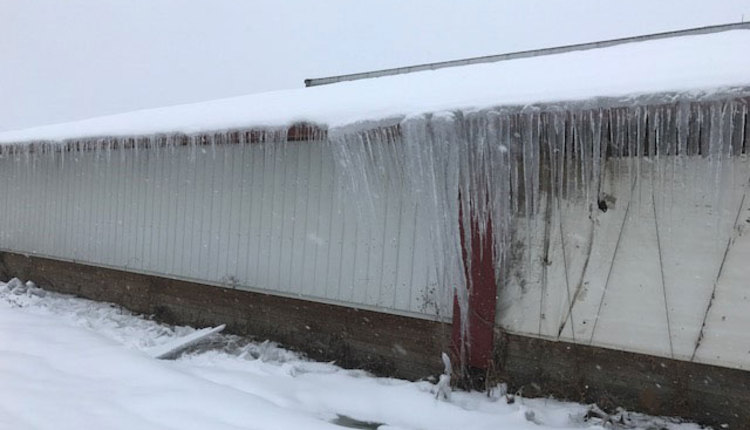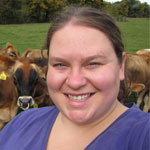
I can’t be the only dairy farmer who gets a little bitter taking the advice of industry professionals. It’s pretty hard to do what they suggest when they get to spend their days sitting behind a desk being nice and warm while your hands are completely numb from chipping ice off of your third waterer of the morning. I’m not saying that their advice isn’t valuable or that they don’t have good insights. I’m just saying that sometimes it’s hard to take them seriously when we’re the ones out here doing it every day.
My dad is a very smart man who has never been afraid to try new things. Every year, I’m reminded of two industry standards that he has ignored and that have made our barn more manageable in this ridiculously cold weather. The first happened right from the start.
We were one of the first parlors in Northwest Pennsylvania and all the experts wanted in on the project. One thing that they were all in support of was 16-foot-high sidewalls. “It’ll be better for ventilation,” they told us. “The crosswinds will make this barn 20 degrees cooler in the summer.”
My dad stuck to his guns and made the sidewalls 10 feet high. Guess what? Four years ago, when we reached record low actual temperatures of minus 30°F, we had the only barn in our county that could still scrape manure.
Six years ago, we added 50 feet onto one end of our barn. It’s nothing but cow space, more stalls, and extra feedbunk. To this day, we have arguments with other farmers about why we replaced the curtains with steel siding. The answer goes back to 15 years ago when a big storm rolled in. Dad had raced to the barn to roll the curtains closed. Then, he took a nap.
When he woke up two hours later, the storm had passed, and he was certain the cows were roasting. When he got to the barn to reopen the curtains, he found 150 happy cows as cool as cucumbers lying under the 25-plus fans. The curtains have stayed closed ever since. The newer 50 feet of barn is not only warmer thanks to the steel and insulation, it doesn’t produce icicles and the snow slides off the roof days sooner than the old sections with curtains.
I’m not telling you to ignore the professional’s advice, I’m just asking you to question it occasionally. Just because no one else is doing it, doesn’t mean it won’t work.

The author dairies in partnership with her parents and brother at Spruce Row Farm in Pennsylvania. Jessica is a graduate of Pennsylvania State University, and since 2015, she has been active in promoting dairy in her local community. You can find her and her 250 Jersey cows on Facebook at Spruce Row Dairy or on Instagram at @seejessfarm.








